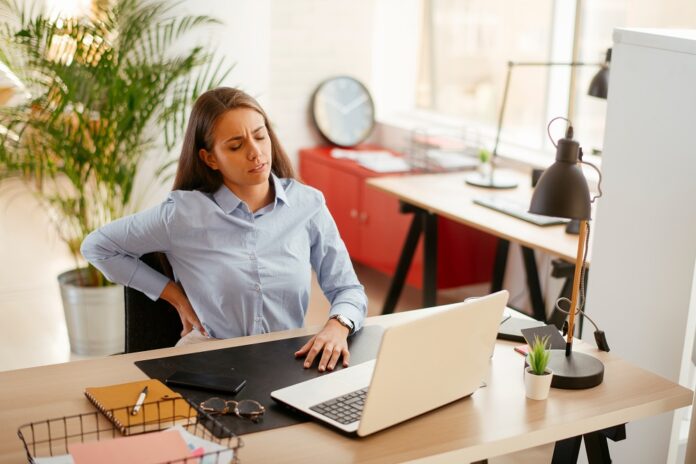Back pain is a common issue that many people deal with in their day-to-day lives. There are several different types of back pain, each with its own causes and treatments. A person may experience back pain in the form of a dull ache, sharp pains, or radiating pain throughout their back and other parts of their body. In this blog post, we’ll explore the various types of back pain and some of the best methods for trying to treat it.
Muscle Strains and Sprains
Muscle strains and sprains are among the most common types of low back pain. Strains are caused by overstretching or tearing a muscle or tendon, while sprains involve an injury to a ligament that joins two bones. Muscle strain and sprain injuries can occur after engaging in strenuous physical activity, such as lifting heavy objects, performing sports, or engaging in manual labor. The low back is especially vulnerable to these types of injuries due to its many supporting muscles and ligaments.
Treatment for muscle strain and sprain-related low back pain typically involves rest, ice, compression, elevation (the RICE method). There is also over-the-counter medications such as acetaminophen, ibuprofen, or naproxen. Physical therapy may also be recommended to help build strength and flexibility in the low back area to prevent future injuries. In some cases, more aggressive treatments such as steroid injections may be necessary to reduce inflammation and pain.
It is important to note that if low back pain persists despite attempting conservative treatments, it is best to consult a doctor for further evaluation. This is especially true if low back pain is accompanied by fever, chills, numbness or tingling in the legs, or unexpected weight loss. These may be signs of a serious medical condition that requires immediate attention from a medical professional.
Degenerative Disc Disease Back Pain
Degenerative Disc Disease (DDD) is a condition where the discs located between your vertebrae deteriorate due to age-related wear and tear. DDD can cause severe lower back pain which can radiate down into your legs as well as other symptoms such as numbness and tingling sensations in certain parts of your body.
To treat DDD-related back pain, it’s important to get plenty of rest and exercise regularly to strengthen your core muscles which support your spine and lower back region. You should also consider undergoing physical therapy sessions which will help improve flexibility while managing any painful symptoms you may be experiencing due to DDD. Depending on the severity of your condition, your doctor may suggest surgery as an option but only if all other treatments have been unsuccessful in providing relief from your pain.
Spinal Stenosis Back Pain
Spinal stenosis is a condition where the spinal canal narrows and compresses the spinal cord or nerve roots. This narrowing of the spine can cause low back pain and other symptoms such as numbness, tingling, pins-and-needles sensations, muscle weakness, balance issues, and more.
Treatment for spinal stenosis-related low back pain depends on the severity of the condition and whether or not it is causing any other symptoms. In mild cases, physical therapy and medications such as nonsteroidal anti-inflammatory drugs (NSAIDs) may be recommended to reduce inflammation and manage pain. If these conservative treatments are unsuccessful, surgery may be needed to alleviate the pressure on the spinal cord or nerve roots.
Regardless of the type of low back pain being experienced, it is important to consult a doctor if symptoms persist despite conservative treatment attempts. The doctor will be able to diagnose the specific cause and provide guidance on the most effective treatments for managing any pain or other symptoms that accompany it. With proper care and attention, many people are able to achieve relief from their low back pain and get back to living a normal, active life.















